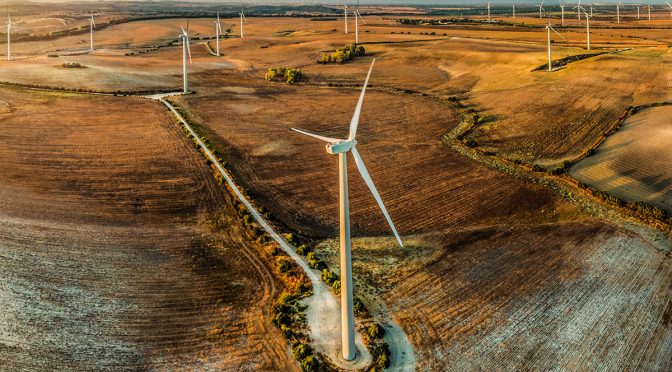The megawatts awarded to wind power in the auction held on January 26, 2021 will represent an investment of more than 1,000 million euros, helping to guarantee employment for more than 30,000 people.
The design of the next auctions must be fine-tuned to guarantee the rate of advance of each technology identified in the PNIEC, generating maximum value for the Spanish economy and recognizing the value of the manufacturing capacity of the sector in Spain.
The total wind power awarded in the auction was 998 MW, which has been assigned to 7 companies. Currently, wind power has 100% of the value chain located in our country, it is the first technology for installed power of our mix and the second for production. With the results of the auction, wind power will be the first technology of the mix in power and production in the coming years.
According to the calculations of the Wind Energy Business Association (AEE), the projects awarded to wind power will involve an investment of more than 1,000 million euros, helping to maintain the more than 30,000 value-added jobs with professional development, trajectory, versatility and power competitive purchasing.
AEE considers that the participation of wind power in this auction has turned out to be high, a sign of the interest on the part of wind power developers in obtaining the remuneration scheme it offers, the commitment of the sector to progress annually towards compliance with the PNIEC, and the existence of a stock of mature projects, large enough to be able to cover these objectives over the next few years.
For Juan Virgilio Márquez, CEO of AEE: “The effectiveness of the recent auction must be measured by the ratio of projects actually executed within the allotted timeframe and by the positive impact it generates on the value chain. The auction should help balance, channel and control the pace of advancement of each technology to meet the PNIEC. Therefore, the dimensioning of the minimum quotas for each technology and the project start-up schedule must respect the proportionality that each technology has assigned to comply with the PNIEC. In the case of wind power, the sector can annually assume larger quotas than the current one. Boosting the Spanish wind sector is necessary to contribute to economic recovery in the coming years ”.
Renewable auctions and PNIEC targets
The auction is a tool that helps to increase the speed of renewables. However, auctions are not a sufficient mechanism to meet the objectives of the PNIEC.
The annual wind energy advance should be around 2,200 MW in order to reach 50,333 installed wind energy in 2030. Therefore, the wind energy quota of the current auction with 1,000 MW, plus the already planned 1,500 MW per year until 2025, are not enough. Ensuring an annual rate of progress of projects is essential to avoid tensions in the supply chain.
The challenge is to enable a design for future annual auctions that makes it possible to take full advantage of the characteristics of each technology, not competing with each other but joining efforts, and that ensures the existing value chain in our country. Competition under technological neutrality schemes forces, even with guaranteed quotas for each technology, aggressive strategies by the actors, which may not take into account the implications in our existing value chain.
However, in addition to the possibilities offered by the auction, there are other mature wind projects that strategically opt for other mechanisms such as PPAs or merchant with coverage, for their development and that will continue to contribute to the growth of the wind power necessary to comply with the PNIEC. The coexistence of the different mechanisms will make it possible to achieve these objectives, advance decarbonization and greater electrification.
Auction, quota by technology and calendar
The wind quota established in the auction, 1,000 MW of wind power (less than 250 wind turbines with current models), actually implies a workload well below the capacity of the sector, which is close to 4,000 MW / year. Therefore, ensuring an annual rate of progress of projects with the appropriate size is essential to avoid tensions in the supply chain.
Assigning an additional 500 MW of minimum quota to wind power will help to stabilize the value chain located in our country and will ensure a greater reduction in CO2 emissions than with any other technology.
The installation date of the new megawatts awarded for wind power in the auction is 2024. The wind sector requires manufacturing planning for 2022 and 2023 so that industrial centers have the necessary visibility and prediction, which avoids tensions in the chain of value.
Price of electricity and wind energy
The increase in wind power in our system lowers the price of electricity. Wind power generates many hours of production in times of high demand, lowering the electricity bill for the consumer and for the industry.
The rhythmic development of wind power with its goal for 2030 is of great relevance in reducing the risk of high electricity prices in the winter months. Faced with an expected increase in electricity demand in the coming years, it is essential to increase wind power generation, especially in the winter months to avoid reproducing the high prices seen in the second week of January this year.
Wind power is the only competitive renewable technology available that can give more generation in those crucial hours of electricity consumption on winter days increases installed power. Failure to increase the wind quota to the level necessary to reach 50.3 GW of wind power in 2030 would be to risk having high electricity prices more frequently in the winter months, which are precisely those in which citizens and communities consume the most electricity. companies, and what else to pay your total energy bill.


